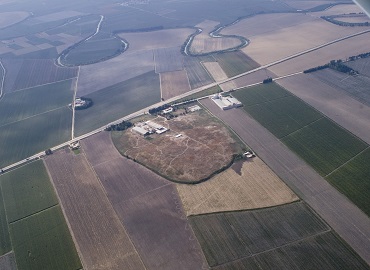
The Tayinat Archaeological Project (TAP) is a multidisciplinary project investigating the historical development of urban institutions and the rise of early state-ordered societies in the ancient Near East. Tell Ta‘yinat is a large archaeological mound located on the Amuq Plain in southeastern Turkey. It was the scene of large-scale excavations in the 1930s, which uncovered several large palaces (called bit hilani), a temple (famously compared with Solomon’s temple), and numerous beautifully carved stone reliefs, sculptures, and stelae inscribed with Luwian (Neo-Hittite) hieroglyphic inscriptions, and helped to identify the site as ancient Kunulua, capital of the Neo-Hittite/Aramaean Kingdom of Patina/Unqi. The primary aim of the renewed investigations is to assemble archaeological data from the presumed urban center of a succession of prominent, historically-attested Bronze and Iron Age polities for comparison with existing data sets from comparable contexts (e.g. domestic/residential, administrative/public) at rural village sites in the region. This explicitly regional approach, still relatively rare in Near Eastern Archaeology, is designed to facilitate multiple levels of analysis, and to produce the multivariate data needed to engage in more systematic investigations of the complex social, economic and political institutions developed by the first urban communities to emerge in this part of the world.


